As we respond to the COVID-19 global pandemic, many of us are suddenly taking on roles as full-time caregivers and stand-in teachers. With schools and universities worldwide switching to online learning, you might be asking yourself how you can make the best of your favorite language learners' time at home.
Our first piece of advice: hang in there! Be gentle on yourself, be gentle on your learners at home, and do what you can! This is a stressful, uncertain time for everyone, and doing one good thing in a day is doing good enough.
We've compiled this list of resources and ideas to help keep language learning fresh while school is out. Here are ideas of how you can transition to stay-at-home teacher without having to pull an all-nighter.
Getting started with Duolingo
Duolingo offers 94 different language courses, including 35 for English speakers, and all courses, lessons, and levels are totally free. Duolingo is available for download on mobile devices (iOS and Android) and can be used on the web. Our language courses are made up of bite-sized lessons and tips about grammar, vocabulary, and pronunciation. For our most popular courses, like Spanish and French, learners can also build their language skills with additional features like short Stories and the Duolingo Podcasts.
5 ways to study with Duolingo
Duolingo gives you lots of freedom to personalize your learning. Use all of these different tools when you study; variety keeps you engaged and is good for retaining new material!
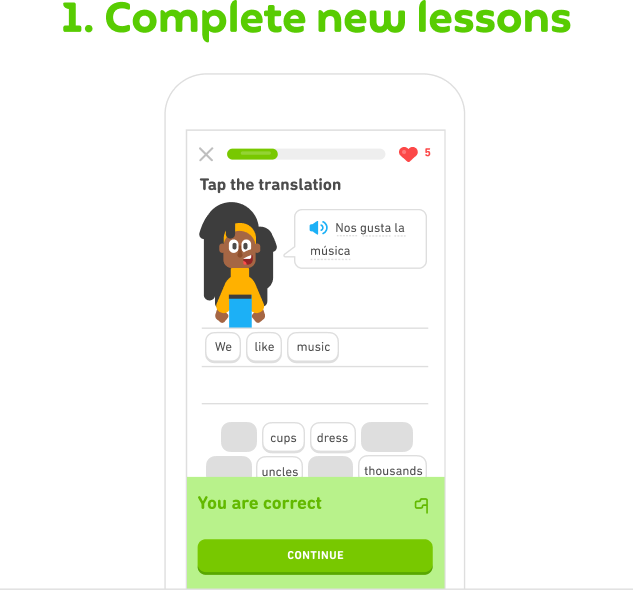
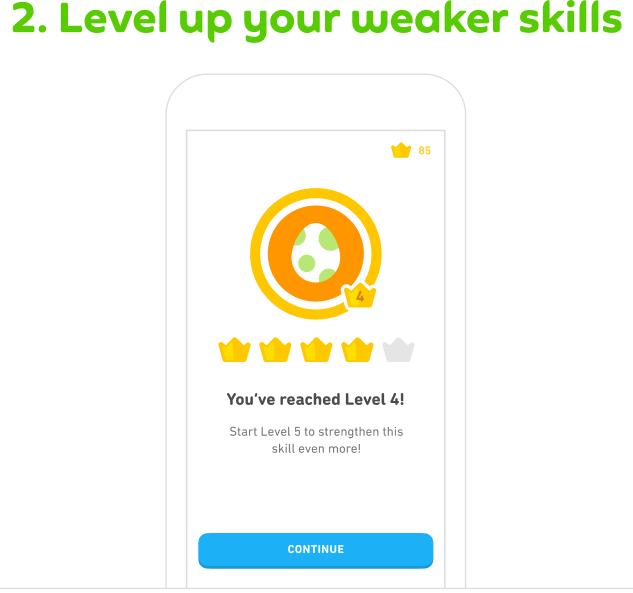
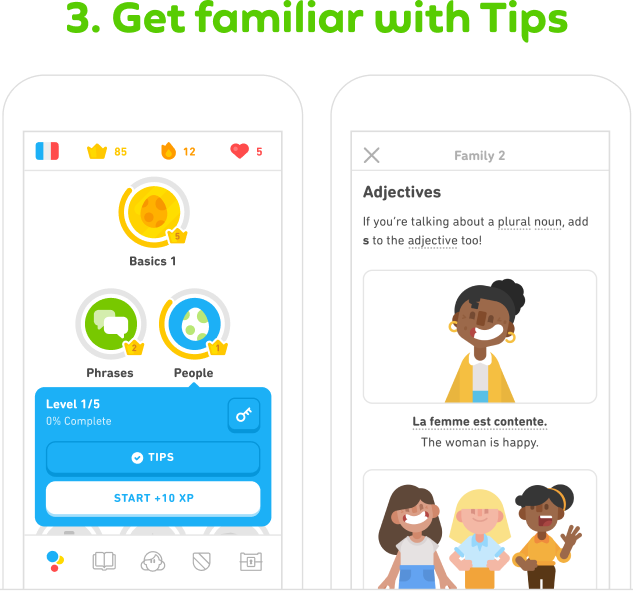
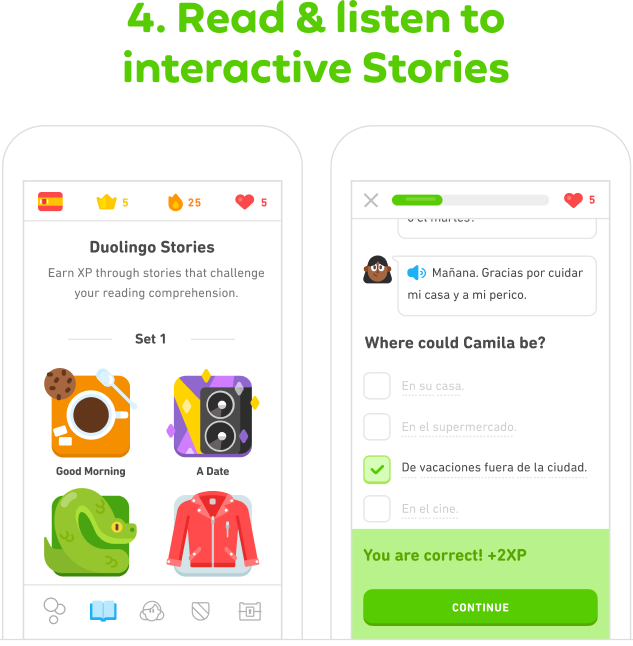
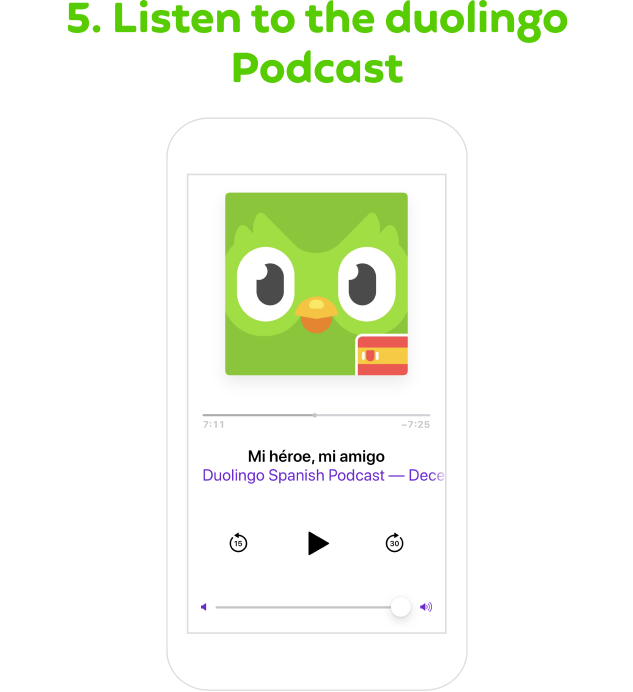
5 challenges for intermediate and advanced learners
Ready for hard mode? Duolingo is a great fit for more advanced students who are ready to step it up. Try some of these tricks-—if you're up for the challenge!
- Can you do a whole lesson without clicking on a word for a hint?
- How many sentences can you remember and write down after a lesson?
- Try to do exercises or Stories by only listening-—reading counts as cheating ;)
- Pick a Tip and write down all the examples of it that you see in the lessons.
- Listen to a Duolingo Podcast episode and answer the study questions.
5 tips to boost your learning with Duolingo
There are lots of ways for families and students to make the most out of learning with Duolingo while at home. Here are some ideas to keep your learners’ language skills in shape!
- Help train your brain to the sounds of the language by making sure the audio is on.
- Repeat each sentence out loud—-this helps with pronunciation and memory!
- "Hover" around a group of skills, to get the best mix of old and new material.
- Take a screenshot of difficult sentences and write them down by hand after the lesson.
- Close your eyes and listen to a sentence before looking at how it's written.
5 ways to get creative with Duolingo
Take what you've learned on Duolingo and give it your own spin. Applying language to new contexts is fun and good for learning: it builds broader connections in your brain, which improves memory and recall.
- Take a screenshot of a sentence during a lesson and write a short story or dialogue including the sentence.
- Act out a Duolingo Story with someone at home, or with a friend or classmate on Skype, FaceTime, or TikTok! For an extra challenge, perform all the characters yourself. :)
- Take a screenshot of a sentence and draw a picture to represent it. Remember to include the sentence in your picture and tag @duolingo if you share it on Twitter or Instagram.
- Choose a Word of the Day or Word of the Week and take a screenshot of every sentence with that word. Can you make a comic or story with all those sentences?
- Check out your weakest words at duolingo.com/words and write a story using all of the weak words.
5 ideas for your learners' (now-abundant) free time
Not all of your day will be spent on school tasks—-and nor should it be! The best learning happens without you even noticing, and that's true inside your Duolingo classroom and out. With a lot of unstructured time on our hands, here's how to mix language learning into your free time.
- Watch a movie or show in the language. For beginners, use English subtitles to follow along. For intermediate and advanced students, use subtitles in the language you're learning!
- Read about a topic you enjoy by finding a website in the language. Kids sites are great for beginners, or look for something more complex, like a newspaper article or Wikipedia, for advanced learners.
- Change your phone settings to the language you're learning—-and see how long you can last! What words do you learn first?
- Check out YouTube for videos in the language you're studying. Kids videos are a great choice for early learners, but also consider news, interviews, culture, food, and travel!
- Create a playlist of songs in the language you're learning. For your favorite songs, write down as many words as you can understand and make guesses for any words you're not sure about. After listening for a week, compare your lyrics to the original lyrics!
Extras for educators
If you're planning lessons for a class or are making long-term lesson plans, check out the Scope and Sequence documents for our Spanish, French, and English courses. We also offer supplementary material for our Spanish and French podcasts, to help you transform them into A+ learning experiences.
Learning and social distancing, one day at a time
Our teaching approach at Duolingo is to make lessons fun and bite-sized, and we think that's a good idea for managing social distancing, too: have some fun, don't overwhelm yourself, and do what you can--at a pace that is right for you.
Here's one way to structure at-home lessons for your language learner.
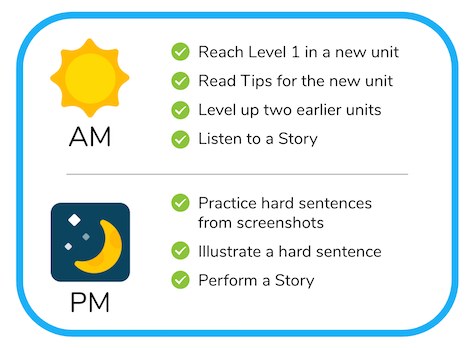
For more lesson plan ideas, Khan Academy has put together daily schedules for every age. You’ll find language learning in addition to math, science, social studies, and playtime for younger learners.
What have you tried with your students? Keep your suggestions coming, and share your at-home lessons and tips with us on social media! We love to see your creativity and how Duolingo fits into your lesson plans, and your ideas can inspire home-bound learners worldwide.
